Jun 25, 2014 | design, painting
Pawel Nolbert is a graphic artist in Poland, whose work with digital visuals began 13 years ago. He’s created for Adobe, Google, Disney, the Grammy’s and a lot of other names you’d recognize, but it’s the work he makes for himself that blows everything else out of the water.
His latest project, Atypical is a part-typography, part-contemporary art series that features bright, elegant swishes of paint dancing through the air, freed from their usual canvas prison. Most of the eight prints have some semblance to a letter or number, which contradicts that freedom-feeling that comes from working in four dimensions. But there is one spiraling tunnel of blue-purple that really lets loose.
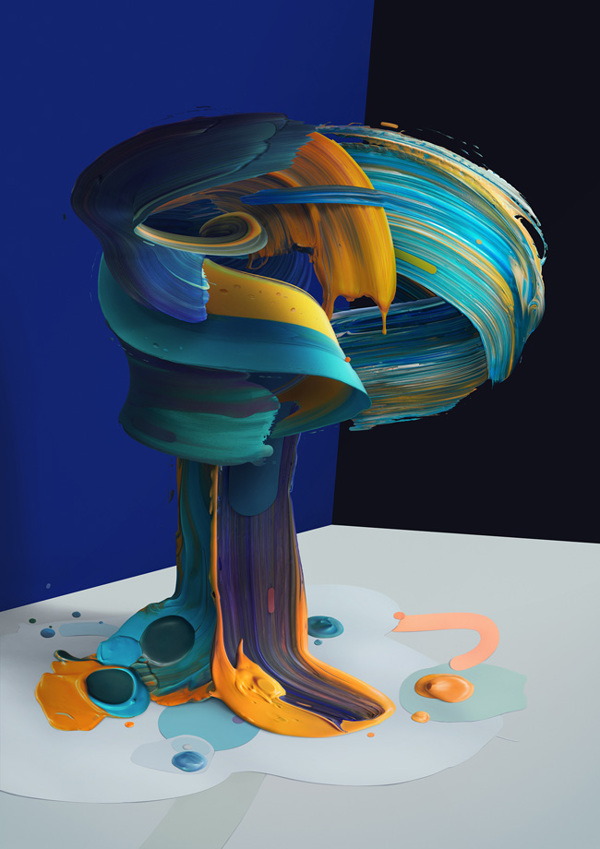
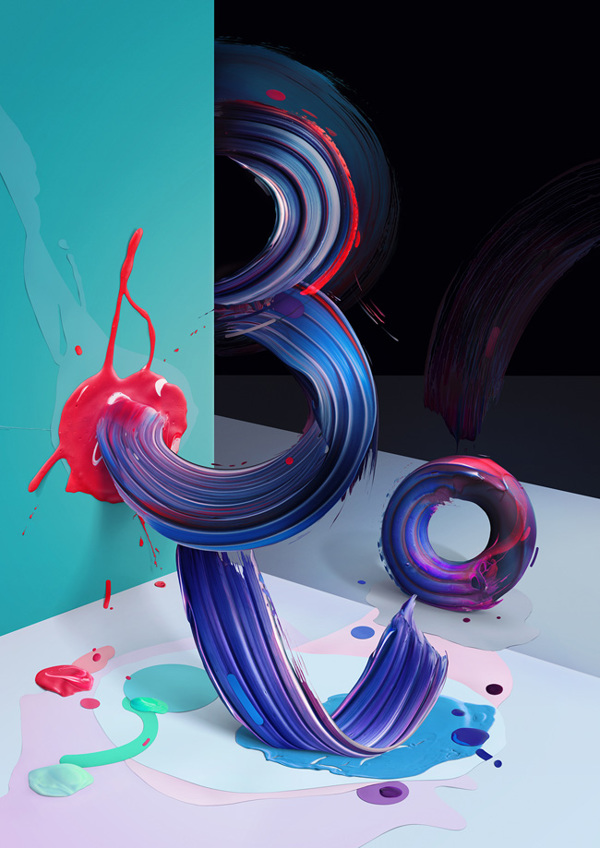
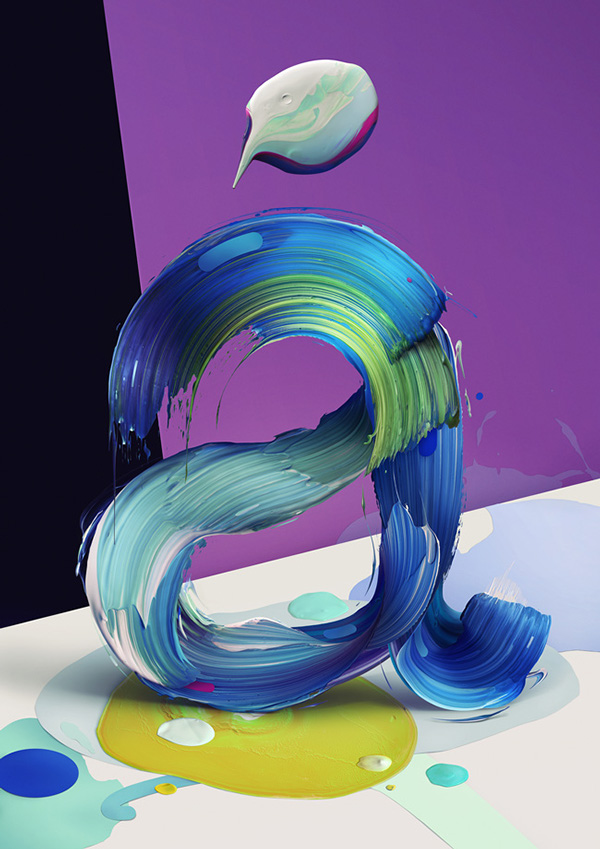
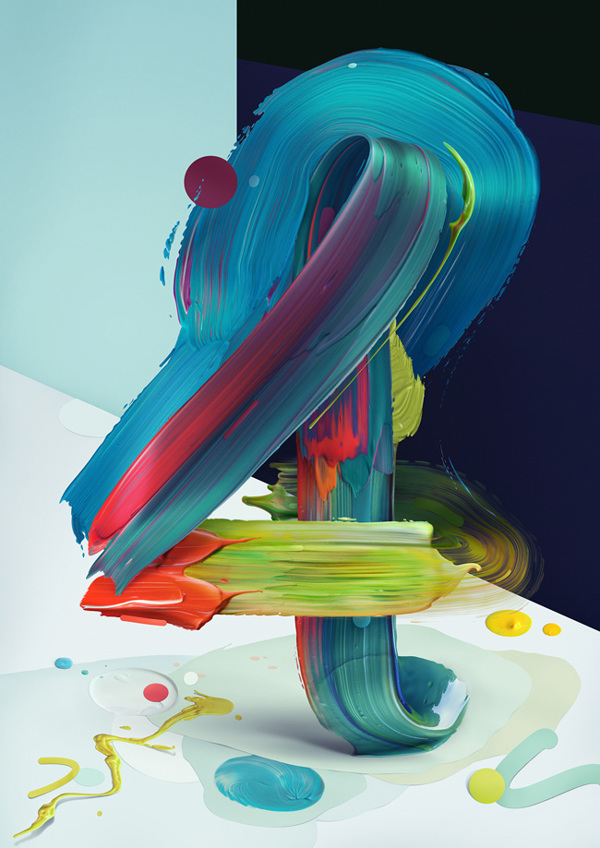
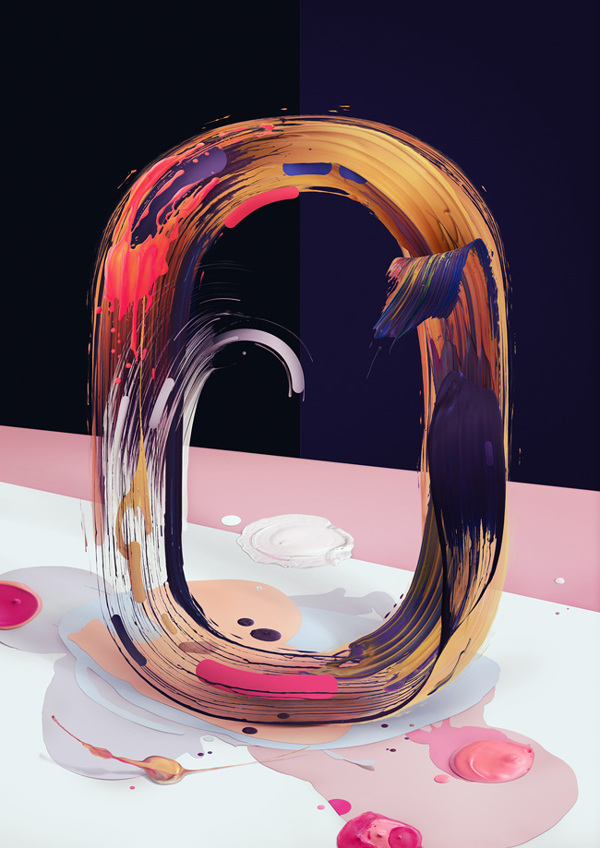
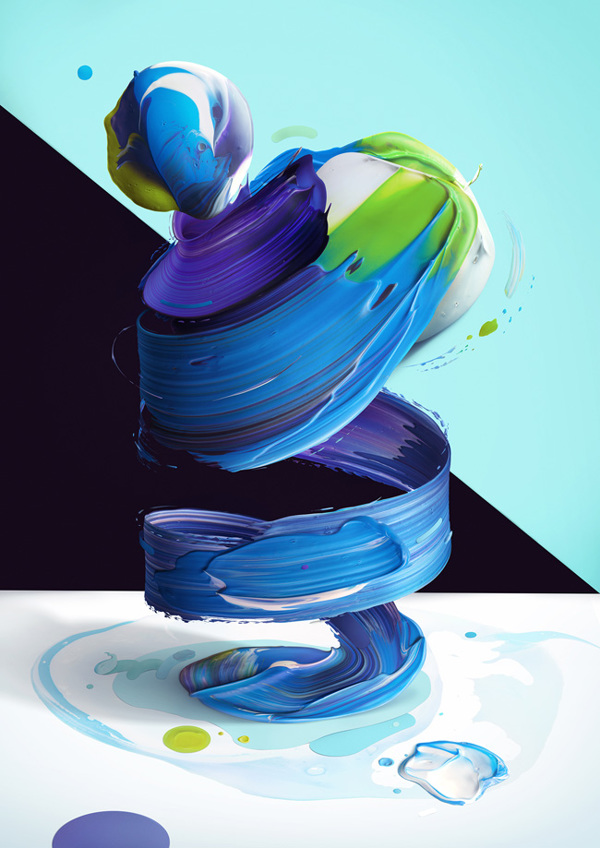
Nolbert created Atypical by actually painting what you see in the works on clear plastic panels that could be twisted and manipulated. The photographs of that painted plastic were then perfected and assembled digitally so that the paint became it’s own entity — thick brushstrokes waltzing in the wind.
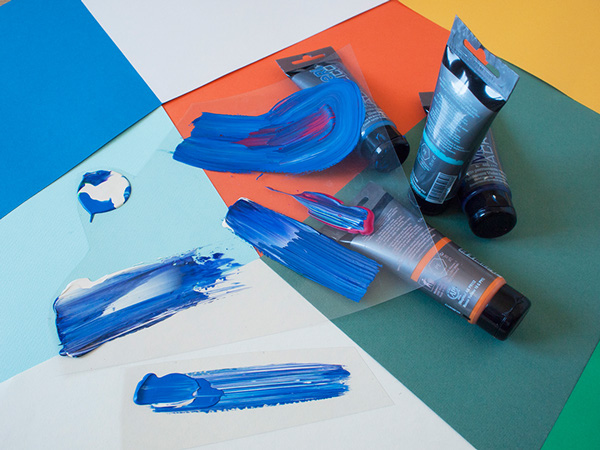
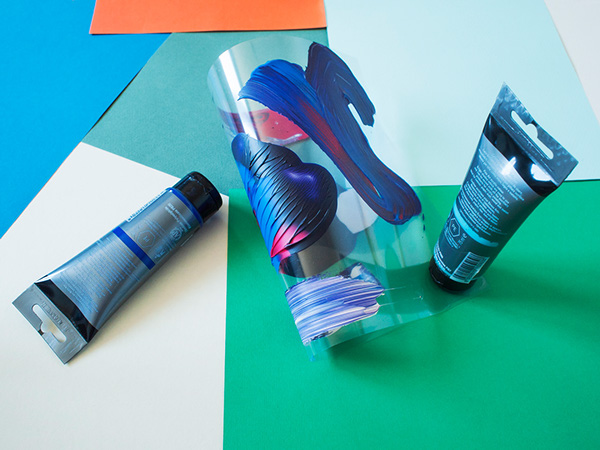
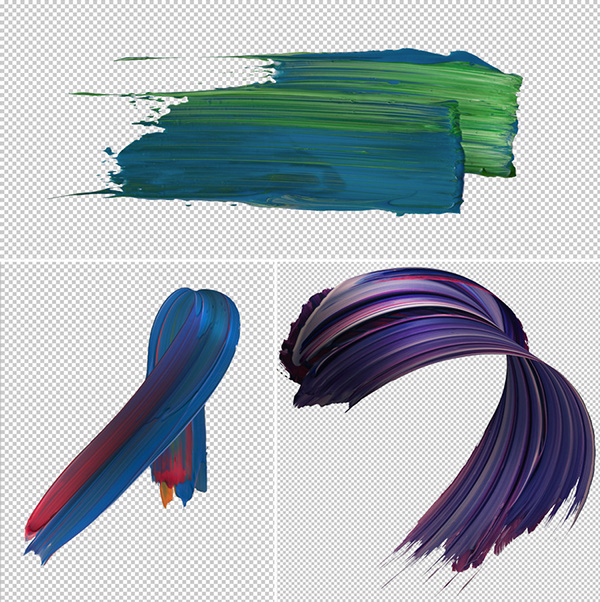
To see more of Pawel Nolbert’s work, find him on Facebook, Twitter, Behance and his amazing Instagram.
Aug 6, 2013 | painting
She leans forward laughing, and her hair streams behind her head like the tail of a shooting star. Dan McDermott’s paintings put the scene in fast forward, including present and almost-present scenes together in a way that makes the action look like it’s happening at light speed.
In the stiller scenes, the paint casts the image through a 1950s television screen – almost clear but with slightly distorted colors and fuzzy details. McDermott’s paintings shows the past as we would remember it if we’d lived through it ourselves – fleeting happy memories and faces frozen in time.
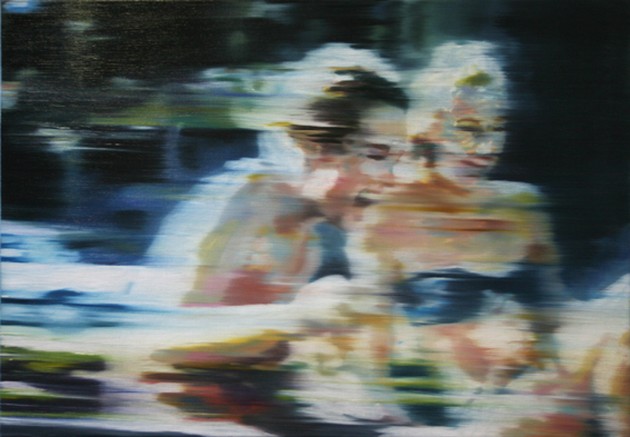
Good Times I, 2010
Oil on canvas
McDermott is represented by the Mark Jason Gallery in London, which writes,
“His extensive body of work is derived from an ever expanding archive of images that for him have an emotional resonance, frozen frames from film and television that are trapped within the decades from which they were born.
The final choice of image will have gone through several layers of processed visual media which McDermott is somehow able to capture in the fast and energetic application of paint.”
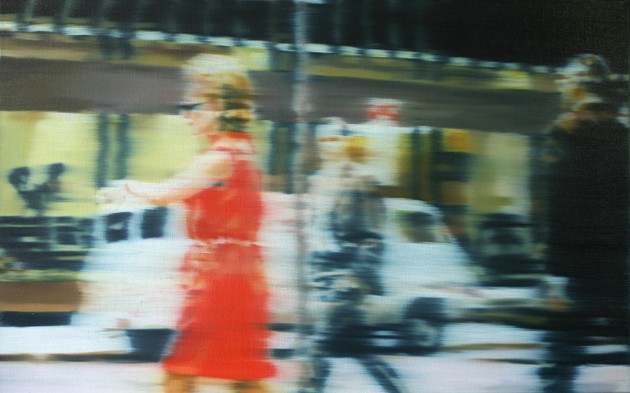
Red Dress, 2007
Oil On Canvas
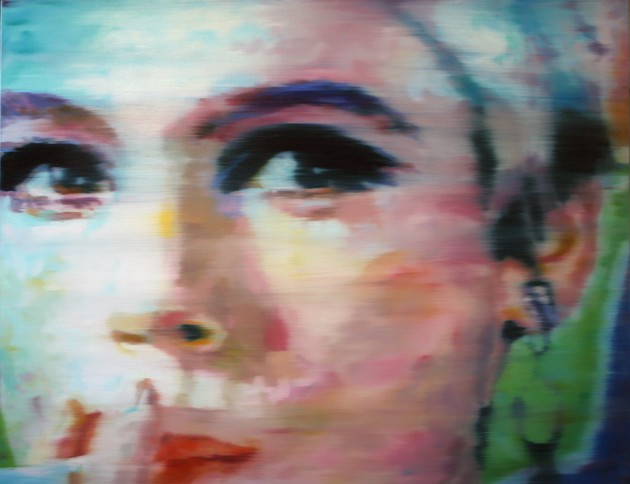
Model, 2008
Oil on canvas
For more of Dan McDermott’s work, see his website.
Jul 30, 2013 | apropos//ts, art history, art where
In Greek and Roman mythology, Daphne was a nymph whose beauty attracted the attention of the god of music, poetry and a bunch of other things: Apollo. In Ovid’s Metamorphoses, Apollo falls in love with her because the god of love, Eros, wants to get back at him for making fun of his archery skills (a little much right?). He shoots Apollo in the heart with an arrow made of gold to make him fall in love, and he shoots Daphne with a lead arrow to incite hate, pitting the two against each other and driving Apollo crazy. Eventually Apollo is chasing Daphne so she calls out to her mother Gai who rescues her by transforming her into a laurel tree.
But that’s not the only ancient tale about people turning into trees. Ovid tells another story in Metamorphoses VIII about an old couple, Baucis and Philemon, who were the only ones in the town to invite the disguised gods, Zeus (Greek)/Jupiter (Roman) and Hermes/Mercury, into their home even though they were much poorer than their neighbors. They were taken up to a mountain by the gods, who flooded the town once they were safe, and their house was transformed into a temple. They were made the guardians of the temple, and were also granted their request to die at the same time as the other. When they did die, they was transformed into a pair of intertwining trees, one oak and one linden.
But from the looks of it, there are probably a lot more reasons why people turn into trees. Maybe trees can even turn into people, Pocahontas-style.

source.

source.
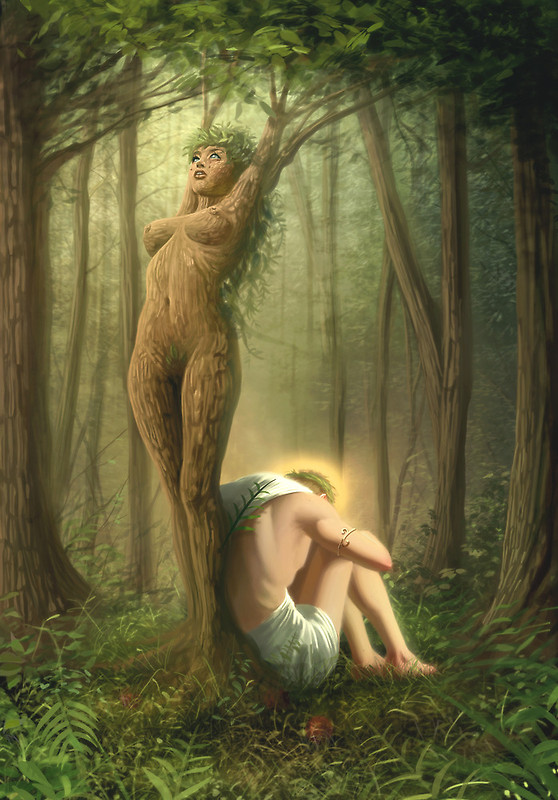
source.
4. artist unknown

source.
5. “Apollo Pursuing Daphne” by Birney Quick (1912-1981)

source.
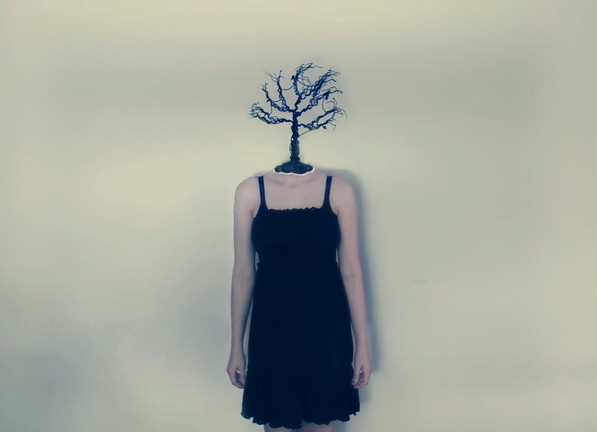
source.
7. “Philemon and Baucis” by Matheus Jean, 1619
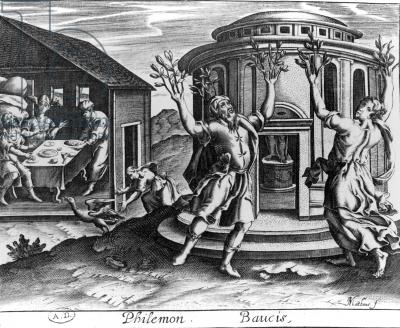
source.
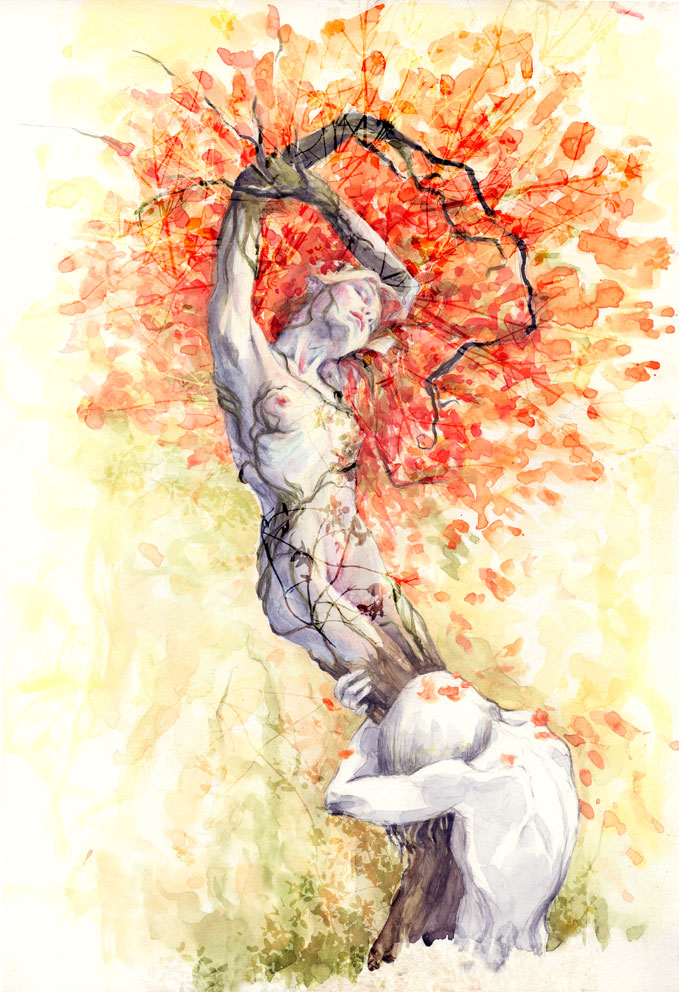 source.
source.
9. artist unknown
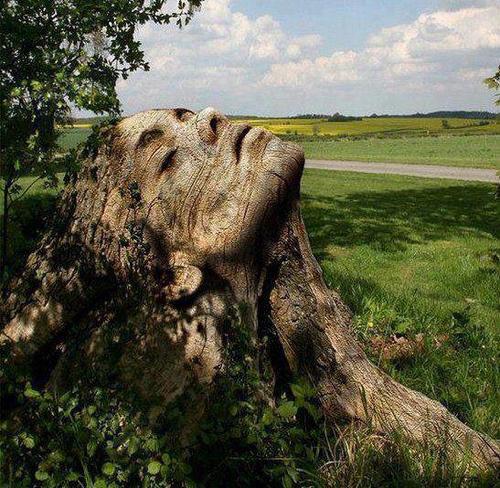
source.
10. Gian Lorenzo Bernini’s “Apollo and Daphne,” 1622-1625
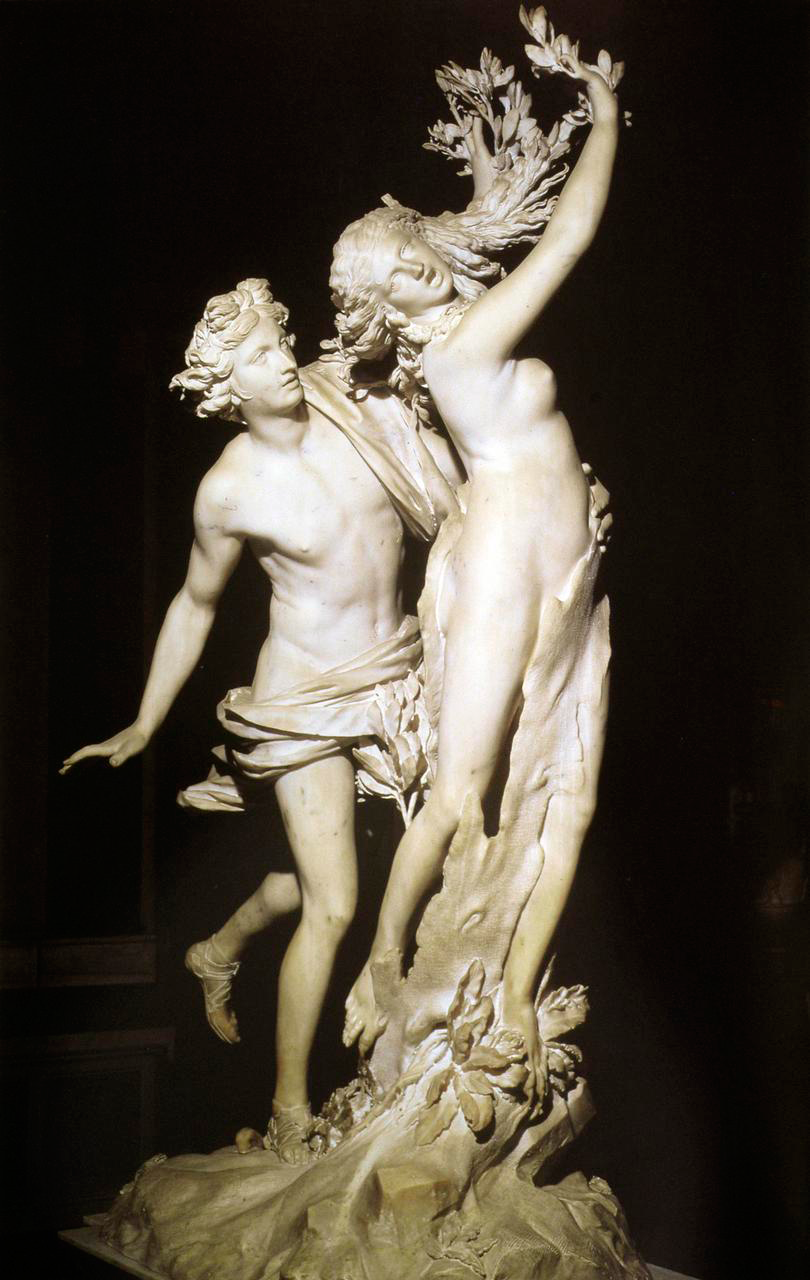
source.
11. artist unknown

source.
12. “Baucis and Philemon,” artist unknown
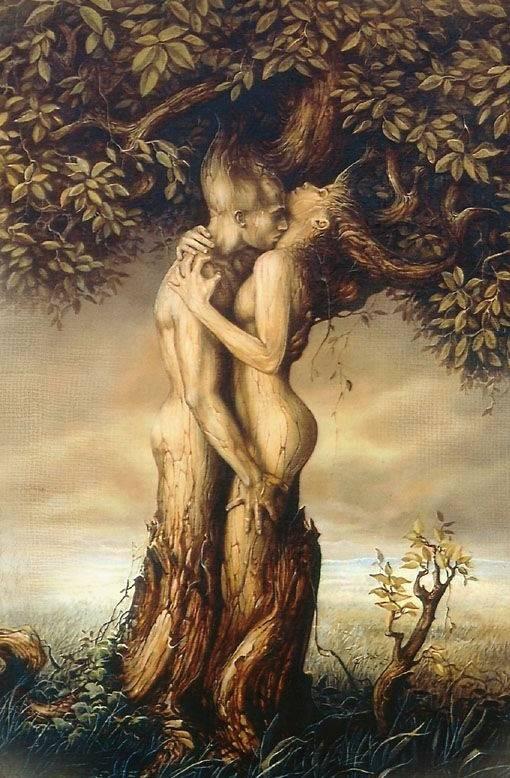
source.
Know any of the artists featured above? Is your work up there? Email me and let me know!
And if you have your own transforming tree art to add, please comment!
May 9, 2013 | apropos//ts, art about
Almost everything we do is done with our hands. We type, eat, lift and hold with a palm surrounded by four dextrous fingers and a very useful thumb. Hands mean action – when they’re at work, so are we. Here, artists show us hands detached from the bodies they belong to so that we see them as our hands, our mother’s and our brother’s hands. Things as basic as body parts bring us together, show us what we have in common. These artworks give our hands imagined abilities we’d never have considered, letting us for a moment feel attentive, skilled, connected, trapped and powerful all at once.
The 16th century German philosopher Immanuel Kant said, “The hand is the visible part of the brain.” These paintings and drawings and photographs let us see the outcome of what’s within.
1. Katarzyna
Wolodkiewicz, Caress (2011)
[zl_mate_code name=”Orange Dynamic” label=”3″ count=”1″ who=”div” text=”In a world of swirling brushstrokes, a single hand reaches down with fingers curled.
The hand carefully scratches a blue line against the orange, spreading its soft color deeper into a fire of orange and red.”]
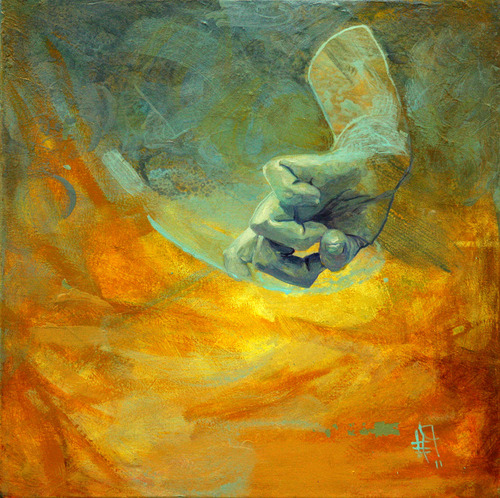
[/zl_mate_code] Source: mydarkenedeyes.tumblr.com
2. Mary E. Bresciani, Radioactive
(2013)
[zl_mate_code name=”Green Dynamic” label=”4″ count=”1″ who=”div” text=”Five fingers are laid out matter-of-factly before us in black and white.
We can see bones glowing underneath the skin because here we have x-Ray vision. “]
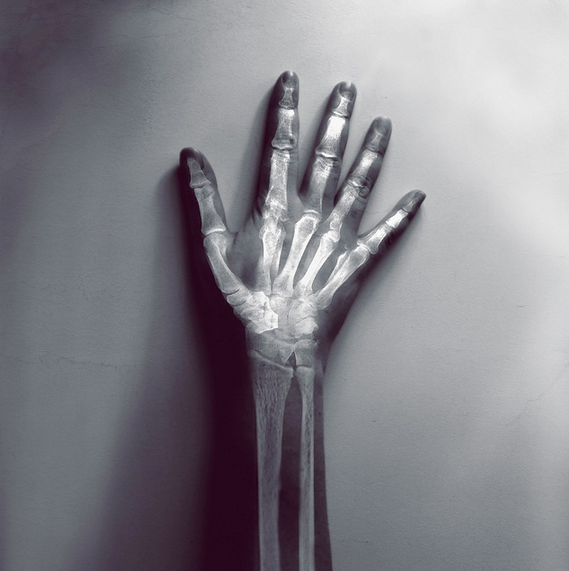
[/zl_mate_code] Source: unplu66ed.tumblr.com
3. Hong Sungchul, String
Mirror (2009)
[zl_mate_code name=”Pink Dynamic” label=”1″ count=”1″ who=”div” text=”In a photograph printed on elastic strings, two pairs of hands reach a cross the distance, grabbing wrists and doubling the bond by pulling gently, elegantly forward with the other hand. “]
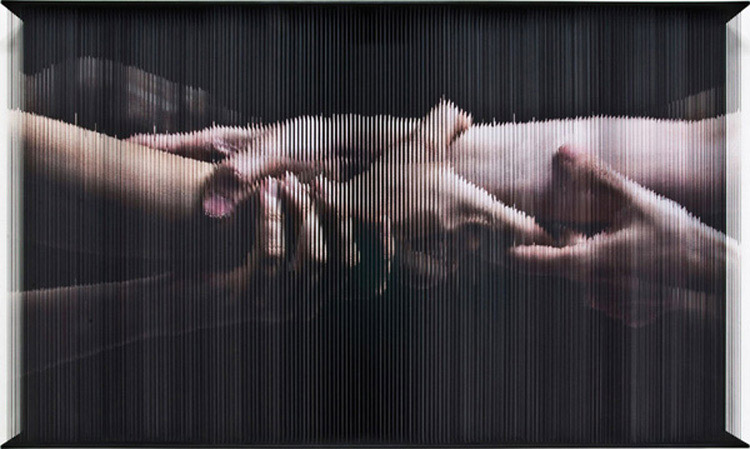
[/zl_mate_code] Source: insolacion.tumblr.com
4. Shohei Otomo
[zl_mate_code name=”Blue Dynamic” label=”2″ count=”1″ who=”div” text=”A hand that’s drawn in black and white makes the red elastic glow.
The rubber band is stretched around the thumb from pinky to index finger, locked and loaded with the potential energy to snap.”]
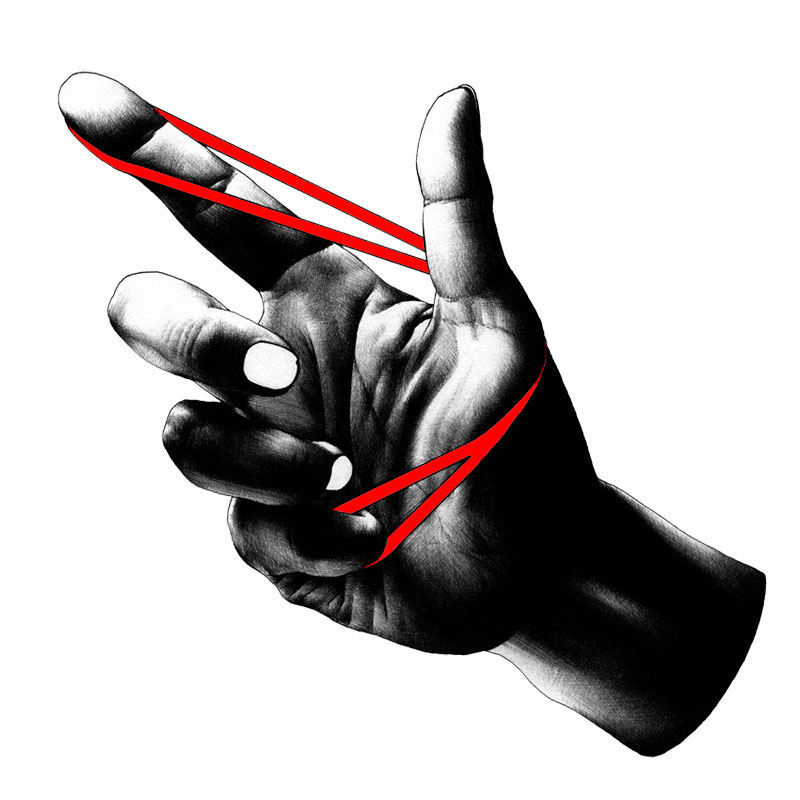
[/zl_mate_code] Source: insolacion.tumblr.com
5. Truls Espedal, The
Return (2010)
[zl_mate_code name=”Orange Dynamic” label=”3″ count=”1″ who=”div” text=”A tiny bird is coming in for a landing on an outstretched finger.
The hand emerges from the center of the canvas’ dark bottom, its palm in the exact middle of a green-brown background.”]
 [/zl_mate_code] Source: fer1972.tumblr.com
[/zl_mate_code] Source: fer1972.tumblr.com
6. Corinne Reid
[zl_mate_code name=”Blue Dynamic” label=”2″ count=”1″ who=”div” text=”This hand extends from the bottom in the same way, but it’s joined by a scratchy vine of black and grey that surrounds it and the pencil it holds.
Does the creepy vine carry the words for the pencil to write or prohibit them?”]
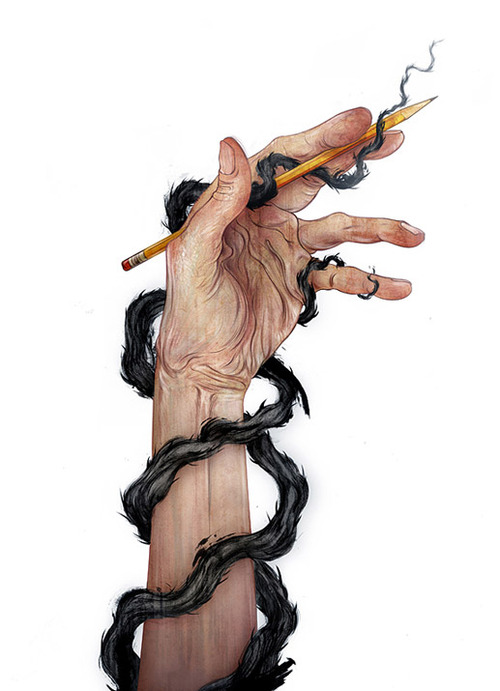
[/zl_mate_code] Source: insolacion.tumblr.com
7. Daniel Grzeszkiewicz,
I’m Back
[zl_mate_code name=”Green Dynamic” label=”4″ count=”1″ who=”div” text=”A hand breaks through a wall, dramatically pulling itself through the hole it made.
The wall drips black and the hand is hunched forward like it’s on the prowl for more wall to break.”]
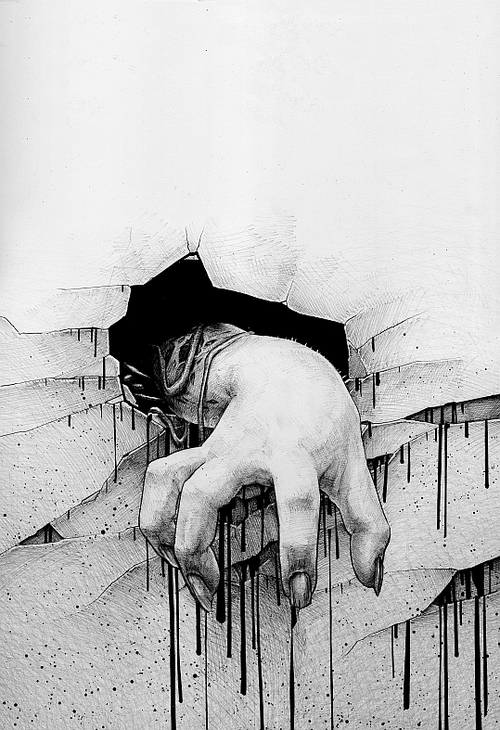
[/zl_mate_code] Source: perpetu8.tumblr.com
8. artist unknown
[zl_mate_code name=”Pink Dynamic” label=”1″ count=”1″ who=”div” text=”Two pink hands melt in a sea of turquoise.
One is just fingers but the other is cut off at the wrist, stretching up to avoid the fate of becoming liquified pink.”]

[/zl_mate_code] Source: cmd-zeta.tumblr.com
9. Bethany LeAnne, Creating
Disasters
[zl_mate_code name=”Orange Dynamic” label=”3″ count=”1″ who=”div” text=”Two hands cup a lightening bolt that springs from a tiny glowing cloud.
There’s real power here, or at least a deep desire for it – a need to feel able to do more.”]

[/zl_mate_code] Source: unplu66ed.tumblr.com
10. Oriol Angrill Jordà, Hand by
Hands (2007)
[zl_mate_code name=”Blue Dynamic” label=”2″ count=”1″ who=”div” text=”A hand has hands for fingers.
Five different hands move and stretch from the same palm, like we’re looking into multiple dimensions of expression.”]
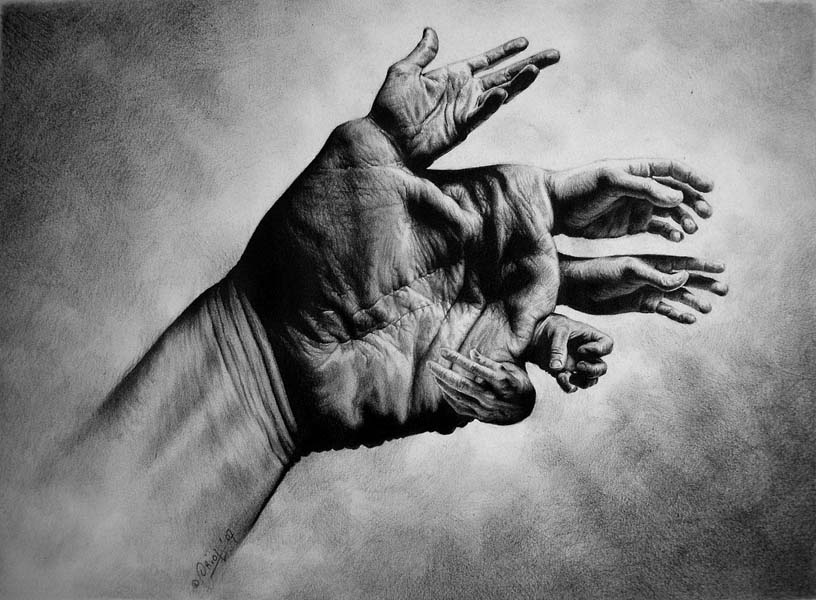
[/zl_mate_code] Source: insolacion.tumblr.com
Apr 9, 2013 | painting
Frothy clouds and hazy distances make for simple scenes of awe in Samantha Keely Smith’s paintings. They’re landscapes taken to a new level – sparkling, glowing and fading – shining enigmas that show more of what we all hope heaven looks like than anything we could ever dream of seeing on this earth. The gods and elements interact without people to mess things up – water, nature and light converging into one scene of wonder.
Land combines with water in “Shift” – a wave of cloud crests in the sunlight above blue sand dunes and before misty air that shines in warm effervescence. Below the breaking wave you can see into the distant blue, to what looks like a glowing forest with clouds instead of leaves. Between two of the center trees shines a white spot of light, like a patronus spell being cast in the distance, or the center seed from which all this beauty has sprung.
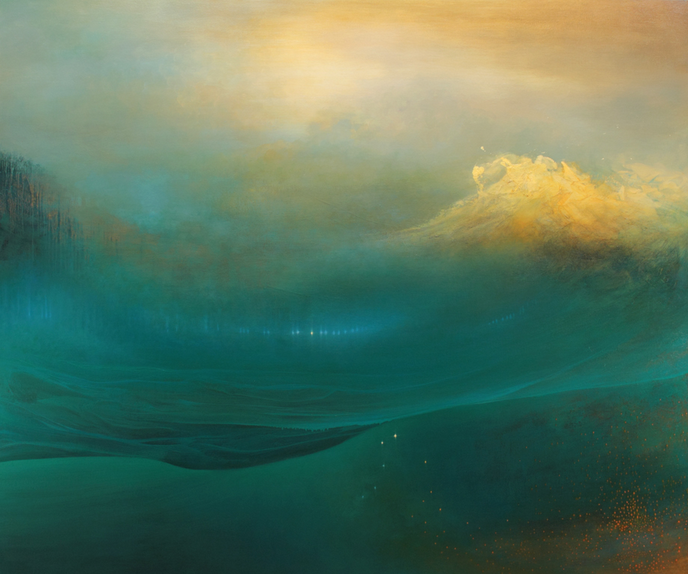
Shift
oil, enamel, shellac on canvas
60″ x 72 “
2012
The waves get speckled orange in “Progeny” – light clouds of paint breaking and bursting in the foreground before a shimmering blue-green haze. “Mutiny” substantiates the water more, almost letting it fill up the canvas and submerging us below its depths, but not without a look into the distance at the land that might be there. Again with a breaking wave as the focus, this one glows bright white, splashing up with spots of pink and shades of orange. “Gathering” shows the calmer scene of a watery mountainside that leads off into the light.
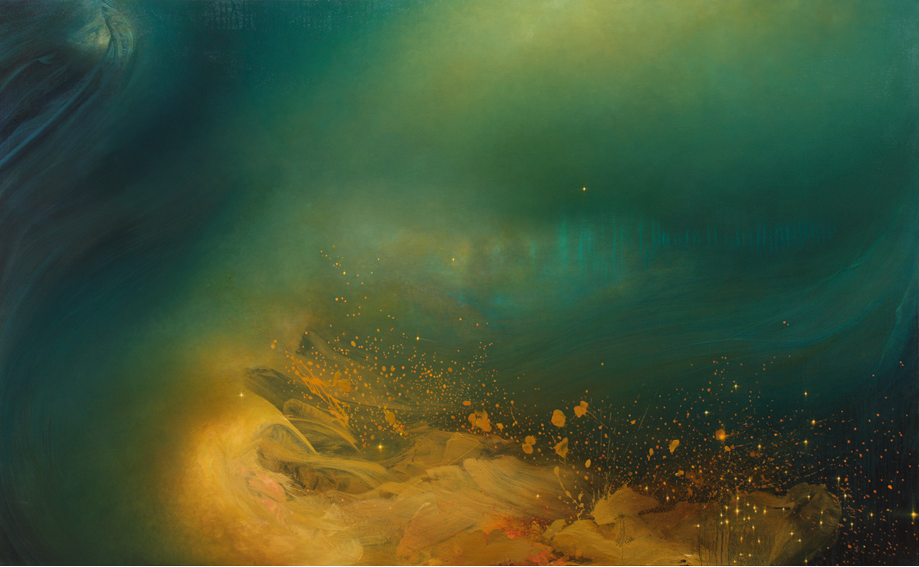
Progeny
oil, enamel, and shellac on canvas
48″ x 78″
2013
Samantha Keely Smith was born in England but moved to the US as a child, and now lives and works in New York. Her work has been shown all over New York City and in Arkansas as well. In 2011, her solo exhibition on Madison Avenue was featured as an Editor’s Pick on ArtInfo, who wrote that her works, “play at the edge of abstraction, blurring between light-filled fields and non-objective compositions.”
Samantha’s artist statement reads:
“Smith’s artwork represents a striving to reconcile the inner world of instinct and the tidal sweep of our emotional life, with an external world that is both beautiful and hostile in its natural grandeur. She attempts to map the place where these worlds intersect.
The translucent layers of paint, contrasting soft ethereal brushwork and harder edged sweeping gestures, echo this divergence and depict a timeless place that hovers between dream and reality in a way that is simultaneously alluring and menacing. The work exhibits the struggle between and among the variety of human impulses: impulses that are as necessary as they are contradictory, and which therefore constantly undermine our psychic and social coherence even as they endow us with vitality, soul, and life. “
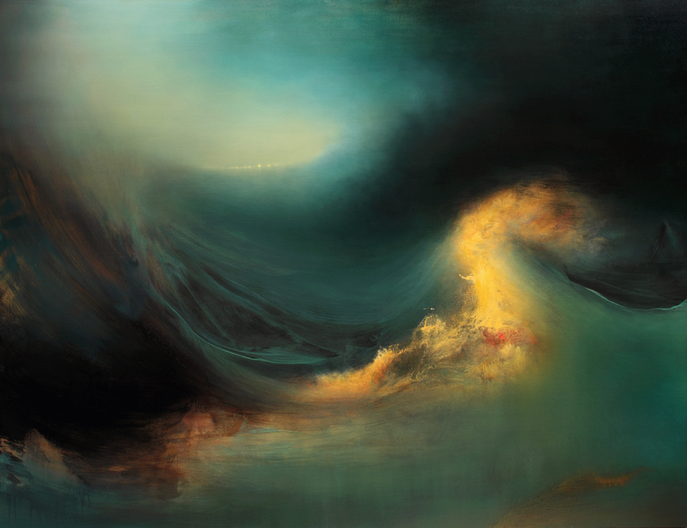
Mutiny
oil, enamel, shellac on canvas
60″ x 78 “
2012
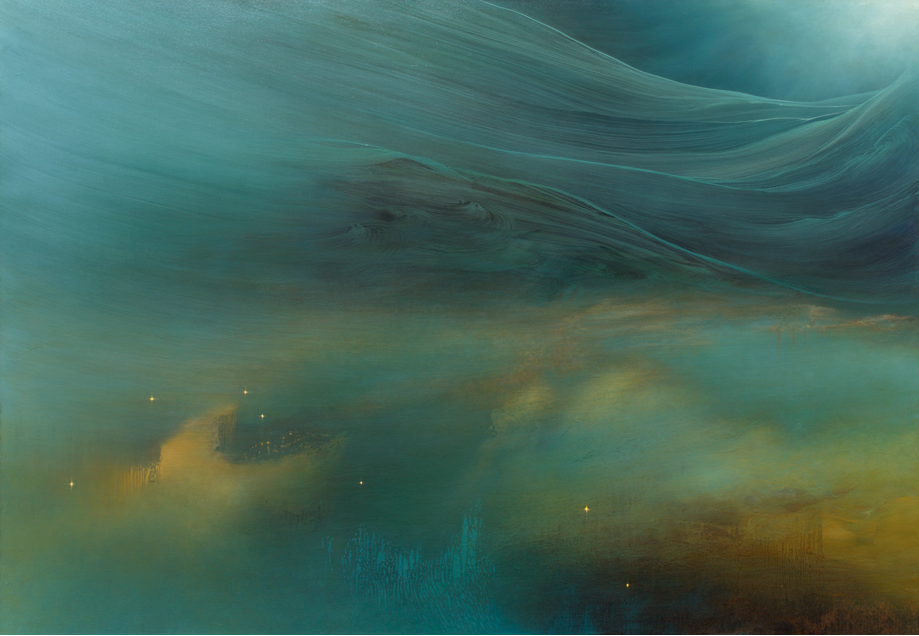
Gathering
oil, enamel, and shellac on canvas
50″ x 72″
2013
For more of Samantha Keely Smith’s work check out her website and her Tumblr.










































